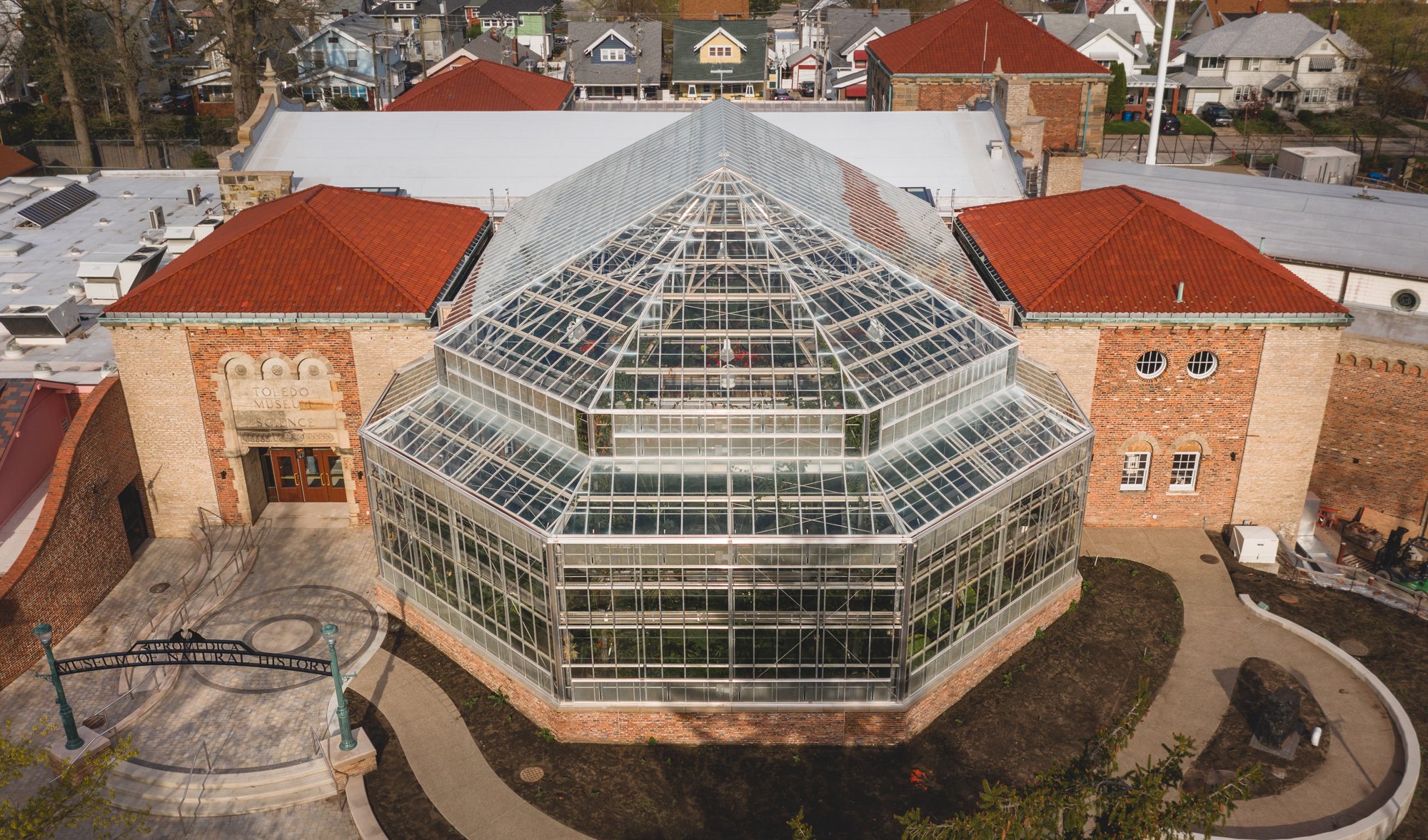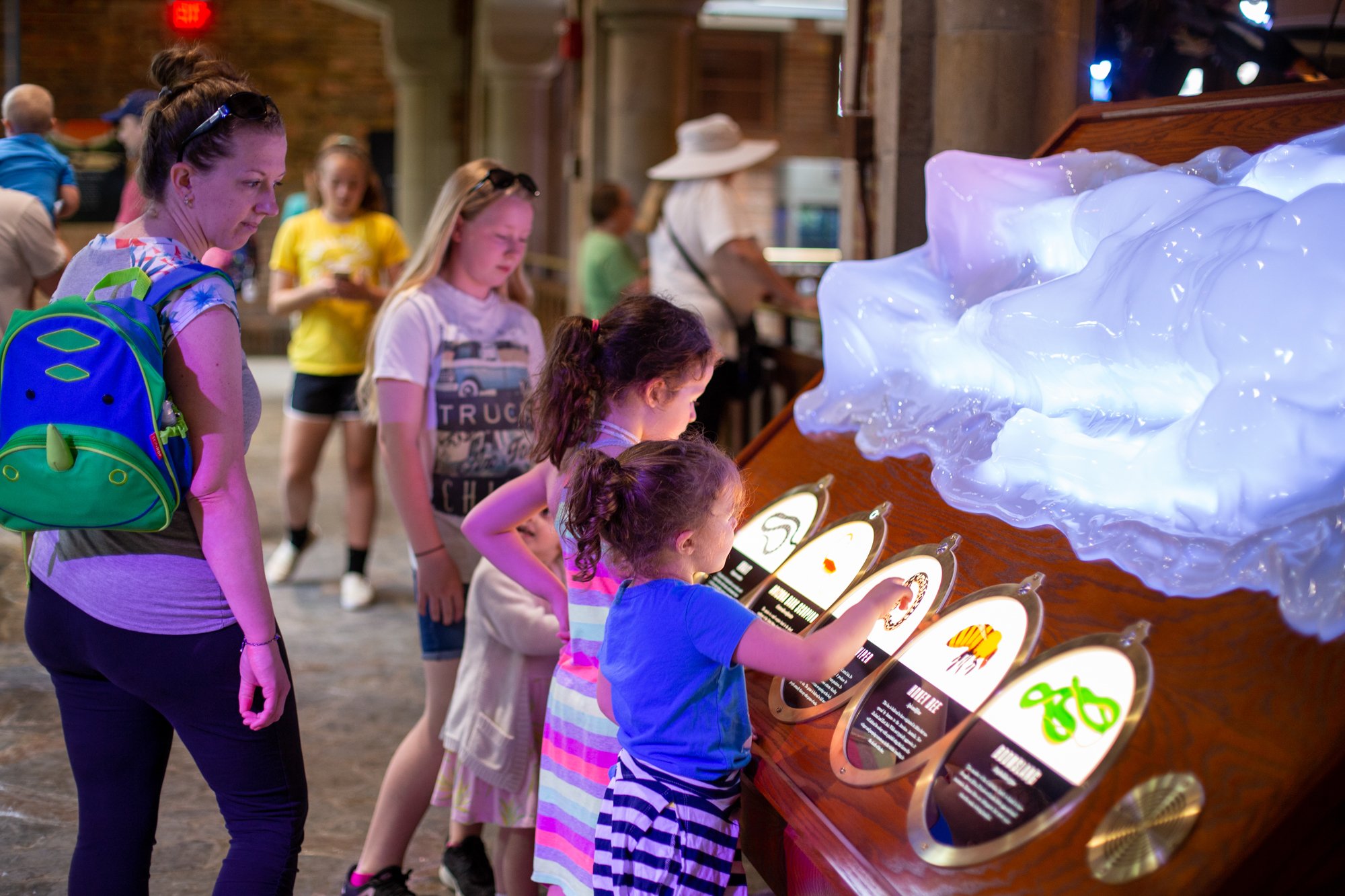The Toledo Zoo & Aquarium, Museum of Natural History Redevelopment
Type of Construction
General Contracting
Square Footage
34,862
Construction Cost
$27,000,000
Completed in 1936, the Museum of Science was a Works Progress Administration building. Holding various uses between 1936 and 2017, the building slowly drifted into the backdrop of the buildings within the Toledo Zoo complex. The majority of visitors to the zoo wouldn’t step foot in the building during their trek throughout the park, unless it was the holidays (when large festive installations filled the halls of the museum), or for private events. Being one of the oldest and largest buildings on the campus, it was time for some much-needed updating to bring it back to its glory of an educational staple of scientific history within the community.
The design intent of the interior renovation was to create a fully hands-on educational storyline throughout the museum that showcased biodiversity in Ohio, from 13,000 years ago to present day. Using Taxa (terrestrial invertebrate and venomous taxa), Geographic, ecosystem, and historic examples, the museum visitor will learn about biodiversity from a global and local perspective. Parallels were made whenever possible and appropriate to highlight North American biodiversity in a global context. While bringing the structure into the 21st century in terms of technology and resources, maintaining as much of the historic structure that could support the new program was paramount.
The main hall showcases Ohio 13,000 year ago to when American lions, mastodons and other giant predators roamed the land. This area allows visitors to experience the prehistoric biodiversity of Ohio and highlight the “exotic” species that once flourished here with similar species to what visitors already recognize. Additional exhibits include a glacier wall with a chilled section to allow visitors to feel the simulated ice. The first floor has a headwater and wetlands area were visitors experience the changes experienced by wetlands locally. The streams and rivers exhibit has touch tanks where visitors can explore a slice of life on the banks of our local waterways as you flip rocks and happen upon live animals that live in our own backyard. Another display, called Nature-In-Hand, is all about getting hands-on with pelts, skulls, and other specimens. In the basement of the building, a new research lab was created and is available to the public for viewing and is used to study multiple animals and ecosystems such as prairie habitats and Spray Toads, a species of toads, which in 2009, was officially declared extinct in the wild.
On the exterior of the building, a new larger greenhouse was added to the front of the museum bringing new life to the entrance of the building. The greenhouse is a two-story, climate-controlled tropical exhibit with a secondary entrance on the second floor allowing visitors to walk on a section of the museum’s roof to access the upper portion. A smaller, single-story greenhouse in the rear of the museum features a walk-through prairie setting. Both greenhouses feature live animals and a plethora of plants that visitors are encapsulated in to provide them with a fully immersive educational experience.
As part of the original construction in 1936, the museum is connected to the outdoor amphitheater by an indoor theater. During the renovation, the museum’s theater underwent dramatic change. The historic beams, stained glass, and other such features were retained, but the sloped floor was excavated to a level surface and visitors can now exit the theater into the museum’s basement. This creates a connection between the large multi-purpose space and the educational aspects of the classroom and keeper spaces in the basement. The stage was taken back to its smaller historical size and the theater has full audio-visual capabilities. All these changes allow the theater to become a more flexible space that can be used for a variety of public and private events. The theater, in particular, demonstrated an overall accessibility issue for visitors with disabilities inside the museum. Renovations, like the installation of an elevator, addressed those problems.










































